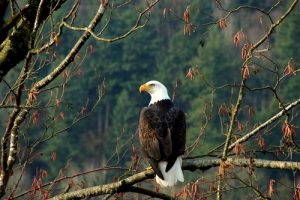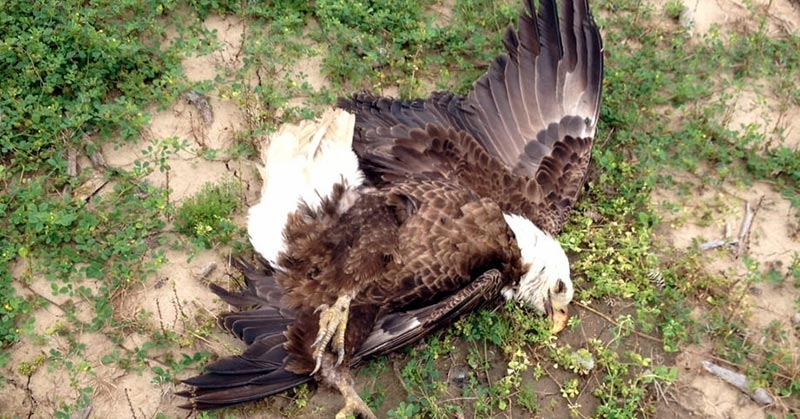Bald eagles, the American symbol of freedom and independence, are under threat. A gliding bald eagle is a sight to behold, however, the life of a bald eagle isn’t always as graceful as it appears. Animal shooting in bald eagle habitats is contaminating bald eagle food sources, and the effects are fatal.
Bald Eagles Being Killed By Lead Poisoning
When hunters shoot their target, the animal is usually left to die or is gutted, the innards or carcass remains out in the open. Gut piles and carcasses attract scavenging bald eagles who unknowingly consume toxic lead contained in the bullets. Lead poisoning effects can display within several days, leaving bald eagles helpless to the toxicity.
How lethal is lead poisoning? A 2014 study found that of nearly 3,000 eagles killed over 30 years, about 25% died from poison, most often lead (1).
Lead poisoning affects the nervous system of bald eagles. As the muscles become affected, eagles may exhibit difficulty standing, inability to open their beaks and an inability to fly. They will usually have difficulty breathing and have gasping tremors. Emaciation accompanies the symptoms, eventually leading to death.
Animals commonly hunted and scavenged by bald eagles include deer, pheasants, elk, and waterfowl. Other bird species known to be affected by lead poisoning include hawks and owls.
Historical Interventions to Save Bald Eagles

Threats posed to bald eagles are nothing new. In 1963, the number of nesting pairs of bald eagles was listed at a scarce total of 487. Habitat destruction, habitat degradation, illegal shooting and contamination of food sources due to the pesticide DDT were factors attributed to the decline in numbers.
Given the bleak plight of bald eagles, the American government stepped in. In 1967, bald eagles south of the 40thparallel were listed under the Endangered Species Preservation Act. In 1972, the government banned the pesticide DDT, and the bald eagle comeback was in flight.
By 1995, the status of bald eagles had been upgraded from endangered to threatened. In 2007, the bald eagle revival reached soaring heights as they were officially removed from the list of threatened or endangered species.
The Ban On Lead Ammunition Is Now Reversed!
The Obama administration, on their last full day in office, implemented a ban on the use of lead ammunition on wildlife. However, Interior Secretary Ryan Zinke of the Trump administration, on his first day in office, overturned the lead ban implemented by the Obama administration.
The root of the decision to overturn the ban on lead ammunition was cost. The price of lead bullets is more cost effective than alternative ammunition, and Zilne sighted this in his reasoning. “It worries me to think about hunting and fishing becoming activities for the land-owning elite” (3).
Lead-Free Hunting Practices
Wildlife conservation groups urge several practices to reduce the potential of lead poisoning, including the following.
- Select non-toxic slugs or bullets for hunting.
- If lead ammunition is used, recover and remove all shot game from the field.
- Hide gut piles and remains of butchered carcasses by burying or covering with rocks and/or brush.
- Remove slugs, bullets or fragments and surrounding flesh from any carcass remains left in the field.
Speak Out

Bald eagles are a magnificent creature, certainly worth preservation efforts. To do your part of ensuring the well-being of bald eagles for today and the future, contact your government official about the concerns facing bald eagles.
Sources
1- https://onlinelibrary.wiley.com/doi/abs/10.1002/wsb.469
2- https://www.theguardian.com/environment/2017/mar/16/us-bald-eagles-lead-poisoning-ammunition
4- https://www.theguardian.com/environment/2017/mar/16/us-bald-eagles-lead-poisoning-ammunition
6- https://news.nationalgeographic.com/2017/12/eagle-death-lead-poisoning-ammunition-bullets-spd/

